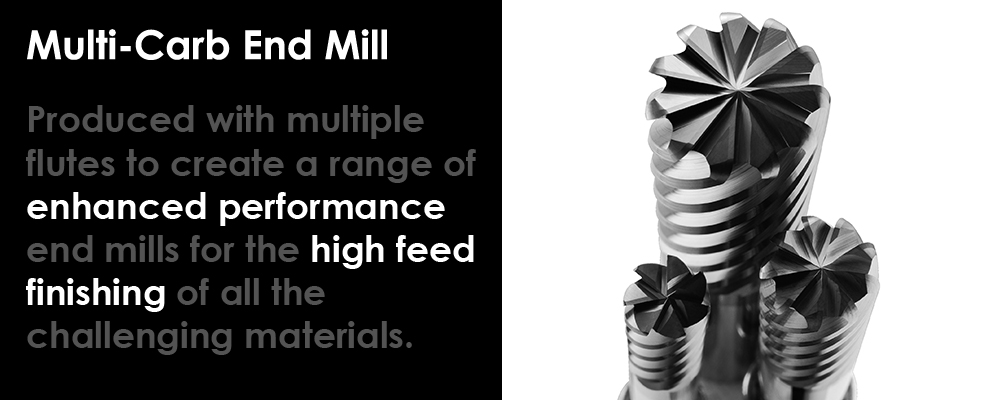Multi-carb end mill for high feed finishing
Nov 12 in News

Kyocera SGS Multi-Carb end mill is produced with multiple flutes to create a range of enhanced performance end mills for the high feed finishing of all the challenging materials found in demanding industry sectors. This includes structural aerospace components; medical components; ferrous housings such as manifolds and pumps; defence components; food and beverage parts as well as general engineering components.
Designed for stability with high feed finishing capabilities, the SGS Multi-Carb Series 66, 66M (Metric) and 66CR (supplied with the company’s high temperature Ti-NAMITE-A coating) features an increased number of flutes. The additional flutes help to increase feed rates, compared with 5 flute finishing tools feed rates can be increased by 40 per cent with the 7 flute design, by 80 per cent in the 9 flute design and by an impressive 120 per cent with the 11 flute design.
Multi-Carb finishing tools use an odd number of flutes to reduce harmonics and improved surface finishes. The odd number disrupts the natural harmonics of symmetrical geometry, while staggering the entry and exit of the cutting edges in a profile finishing cut. And, the optimised cutting geometry has been tested and refined to produce superior surface finishes in challenging materials such as titanium and stainless steel
“The Multi-Carb is designed with a 35° helix angle and a higher than average radial rake for exceptional shearing capability. The exact uneven number of flutes depends on the tool diameter allowing the right balance of performance and finish, while the tool has an eccentric relief for increased edge strength and the overall design is engineered to handle the elevated temperatures produced when machining materials with low thermal conductive properties,” explains Antony Theaker, UK Sales Manager.
Designed primarily for finishing profile cuts the heavy core diameter of the Multi-Carb adds to the stability of the tool. This allows the tool to also efficiently perform high speed machining techniques when roughing, such as trochoidal milling strategies even when machining super heat resistant materials. Flood coolant, MQL (Minimal Quantity Lubrication) and dry machining strategies can be used.
With a high number of cutting edges the tool is designed for a radial engagement not exceeding 15 per cent of the cutter’s diameter. Lighter radial cuts, with around 10 per cent engagement, allow full use of the entire length of the cutter for optimum performance at spindle speeds exceeding 8,000 rpm. To achieve the best surface finish a balanced tool holder and tool assembly is required, along with precise coolant placement when machining the types of materials this tool is designed to address.
Antony concludes: “Intended for finishing applications where surface finish and tight tolerances are critical factors the high number of cutting edges make it possible for Multi-Carb tools to increased feed rates in finishing applications. Any application that currently has long cycle times, high surface finish requirements or tight tolerance demands can be dramatically improved with this range of Multi-Carb cutters.”
NEXT/PREVIOUS:
KYOCERA SGS welcome a new Sales Engineer »
« Kyocera SGS launch new website

